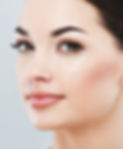
PRP - Platelet rich plasma therapy for Skin & Hair rejuvenation
what is prp?
A PRP facial is a type of cosmetic treatment that involves injecting platelet-rich plasma (PRP) into the face. PRP is a component of blood that contains growth factors and other proteins that can promote healing.
We all have platelets in our blood. PRP is 3-step procedure that involves having your blood:
-
Drawn from your arm
-
Placed into a machine that separates the platelets from the rest of your blood
-
Re-injected into you (only the part of your blood that contains a high concentration of platelets).
If you have PRP to treat signs of aging on your skin, here’s what to expect:
-
Blood drawn: You would have a small amount of blood (about 2 to 4 tablespoons) drawn from your arm.
-
The test tube containing your blood would be placed in a medical device called a centrifuge, which separates your blood into layers. One of these layers contains a high concentration of platelets.
-
Blood injected: Your dermatologist injects the blood that contains the high concentration of platelets into your face or scalp, using a syringe or microneedling (device that looks like a lint roller with tiny needles sticking out of it).
The entire procedure takes about 45 minutes to one hour.
While PRP may sound like something straight out of a science-fiction novel, some patients are finding that PRP can:
-
Reduce wrinkles
-
Plump up sagging skin
-
Get rid of deep creases
-
Improve one’s complexion
-
Diminish acne scars
-
Improves skin tone
-
Breaks down pigmentation
-
Reverses sun damage
What are the side effects?
How long does it take to see results?
You will see positive improvements from one session. You will see the full effects a number of weeks later when your skin cells have had chance to absorb the PRP.
How many PRP sessions do you need?
For maximum results you should have 3 session spaces 4 weeks apart.
How long do the results last?
Results can last as long as 18 months.
Immediately after the treatment you will experience redness across your face/treatment area. This will diminish greatly overnight. Your skin will start to feel tight and maybe slightly itchy/tingly like a sunburn sensation. You will need to avoid itching or touching your skin to minimise the risk of infection.
However when you wake up in the morning, your skin will look glowing, plumper , feel smoother and will look smoother.
Who can have PRP rejuvenation?
While PRP is considered safe for most people, it’s not recommended for anyone who has one of the following medical conditions:
-
Hepatitis C
-
HIV or AIDS
-
Any type of blood cancer
-
Cardiovascular disease, which requires taking a blood thinner
-
Skin cancer in the area to be treated
These conditions affect your platelets, making them unable to deliver the expected results.


